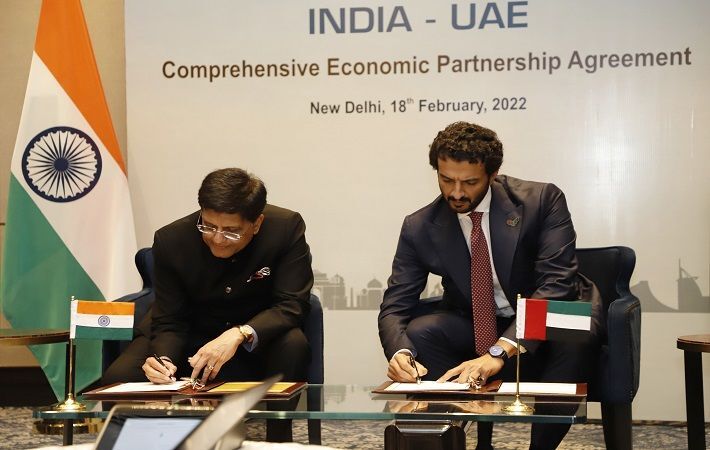The Comprehensive Economic Partnership Agreement (CEPA) between India and the United Arab Emirates (UAE), is expected to boost apparel trade between both the countries.
With India supplying $1,515 million of apparel to the UAE as against its total imports of $3,517 million, Indian apparel exports contribute a decent share of 43%.
The trade pact would result in a drop of 5% import duty for Indian readymade garments (RMG). This will further strengthen the dominant position of Indian apparels in the UAE.

“The government has been taking several initiatives to boost exports from the country and generate employment. This trade pact will benefit the Indian apparels particularly the knitted garments and increase significant employment opportunities in clusters pan India,” said Apparel Export Promotion Council (AEPC) Chairman Narendra Goenka.
The Chairman thanked the government for signing the biggest trade agreement in the past seven years and expressed hope that other Free Trade Agreements (FTAs) with important countries and regions are also concluded at the earliest.
“Tracing the export chain, we find that our apparel exports to the UAE also cater to the apparel needs of Saudi Arabia, Kuwait, Bahrain, Oman and the UK. The UAE is a large retail market with players across the value chain including big western fashion chains, wholesale buyers from North Africa and the Middle East,” Goenka said.
The CEPA is likely to generate additional demand for several apparel items from India. In the knitted garment segment, there will be a hike in exports of t-shirts, shirts, babies’ garments, trousers and briefs.
In the woven garment segment, women’s dresses, tracksuits, babies’ garments, trousers, shorts, shawls, scarves and veils will get the maximum benefit.
However, in order to analyse the actual advantage India could possibly have from the CEPA would depend on various factors, he said.
“Not all products that are high on import demand in the UAE are core export strengths of India. The key factors that would determine the extent of benefit from CEPA are the import demand of specific RMG products in UAE, production strength/ export capability of Indian companies in these products, and acceptance of Indian products into UAE,” Goenka said.
Imports of RMG into UAE (Global versus India)
| India’s exports to United Arab Emirates | United Arab Emirates’s imports from world | % Share of India | ||||||||
| 2018 | 2019 | 2020 | 2018 | 2019 | 2020 | 2018 | 2019 | 2020 | ||
| Apparel | 1900.3 | 1859.4 | 1515.3 | 4604.3 | 4438.9 | 3517.4 | 41.3 | 41.9 | 43.1 | |
| ’61 | Knitted garments | 1099.4 | 1126.1 | 889.9 | 2431.3 | 2344.3 | 1868.6 | 45.2 | 48.0 | 47.6 |
| ’62 | Woven garments | 800.9 | 733.4 | 625.4 | 2173.0 | 2094.6 | 1648.8 | 36.9 | 35.0 | 37.9 |
# Share of India versus competing countries in UAE garment imports
| Apparel suppliers (USD in mn) | 2018 | 2019 | 2020 |
| China | 31.57 | 30.42 | 30.90 |
| India | 41.27 | 41.89 | 43.08 |
| Bangladesh | 9.38 | 9.39 | 9.59 |
| Italy | 6.27 | 6.47 | 6.75 |
| Turkey | 5.45 | 5.55 | 5.44 |
| Viet Nam | 4.52 | 4.77 | 4.90 |
| Cambodia | 3.46 | 3.23 | 3.59 |

